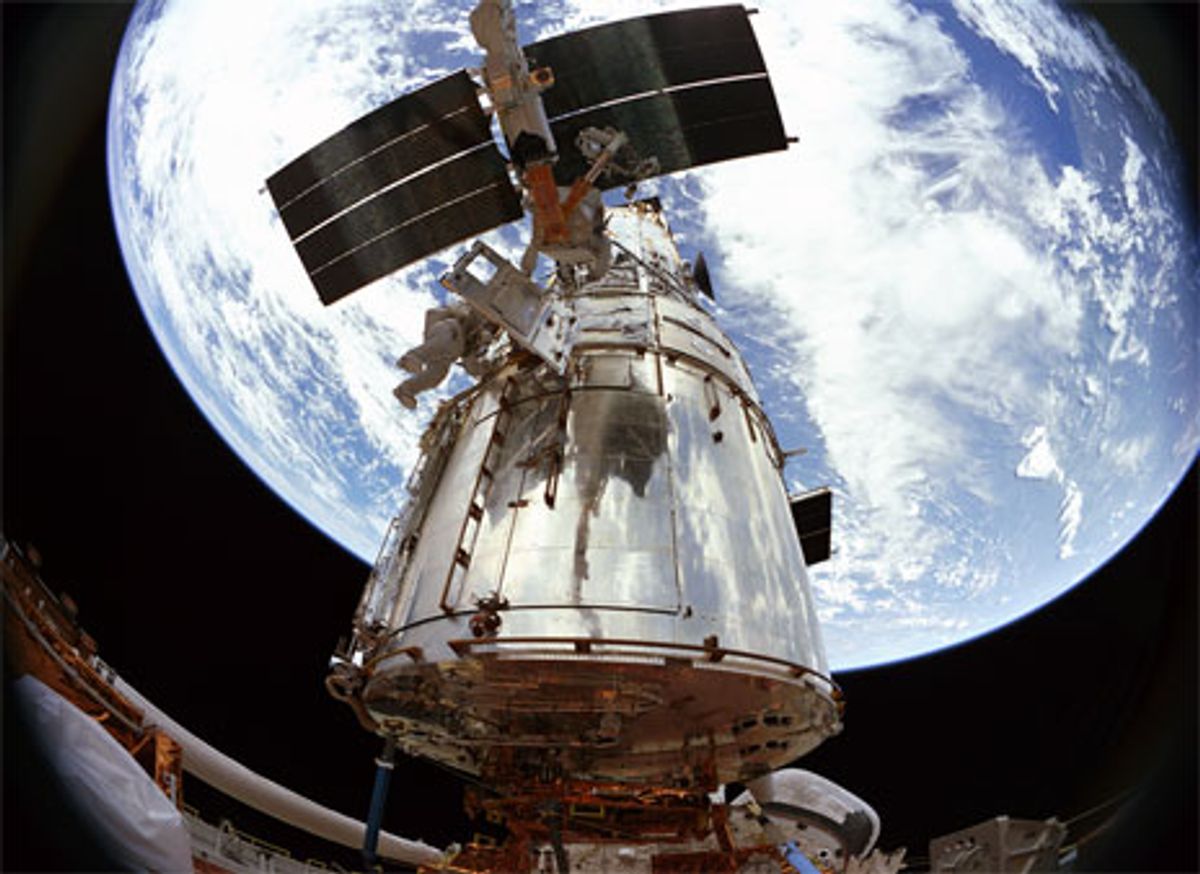This article was updated on 1 April.
17 March 2010—“It was like ”brain surgery performed in boxing gloves,” according to one of the seven astronauts who repaired delicate instruments on the orbiting Hubble Space Telescope last May. The story is recounted in a 3-D documentary that opens in IMAX movie theaters worldwide 19 March. A non-IMAX 3-D version will be released 23 April.
Narrated by Leonardo DiCaprio and directed by IMAX veteran Toni Myers, Hubble 3D is a loving celebration of the 20th anniversary of the world’s most famous telescope. From a breathtaking close-up of the liftoff of the space shuttle Atlantis, which envelops the camera in smoke, to the successful instrument repair in bulky spacesuits, the 40-minute film chronicles the efforts involved in both the STS-125 mission and the filmmaking itself. It’s a self-referential technique that IMAX documentaries have used before, for instance in describing an ill-fated ascent of Mount Everest.
The team used a combination of 149-kilogram IMAX 3-D cameras on the ground, a larger, 204-kg version aboard the shuttle—operated by two specially trained astronauts—and, affixed to astronaut helmets, 2-D digital cameras whose images were converted to 3-D in postproduction. Each IMAX camera was customized to its particular shooting demands. The camera aboard the shuttle had to be encased in an airtight, pressurized enclosure.
After the shuttle landed, filmmakers had to wait a nail-biting month until NASA released the 30 minutes of space footage to them. ”Until then, we didn’t know how it would look,” says Greg Foster, IMAX’s chairman and president of filmed entertainment.
NASA had good reason to release the footage—the mission has already led to further astronomical achievements. “The most important discovery thus far from Hubble’s repair came with the successful ultradeep infrared field that shows the farthest and earliest galaxies ever,” says NASA spokesman J.D. Harrington, in one segment.
IMAX 3-D filming involves two cameras filming images concurrently on 70-mm film from right and left angles, which is akin to how our eyes perceive images. Audience members wear glasses that put the images together. An IMAX screen normally has a 1.43:1 width-to-height aspect ratio and is slightly concave and tilted down so that the images appear to envelop the viewer.
Hubble 3D is IMAX’s eighth space-themed film and the first in partnership with NASA, which gave the filmmakers complete artistic control and didn’t charge them payload costs. ”NASA insiders always consider the Hubble the crown jewel of the space program,” says Foster. “So they were thrilled when we asked to make a documentary.”
About the Author
Susan Karlin writes frequently about the intersection of is an entertainment and technology for IEEE Spectrum. Based in Los Angeles, she also contributes to The New York Times, Forbes, and Discover.


